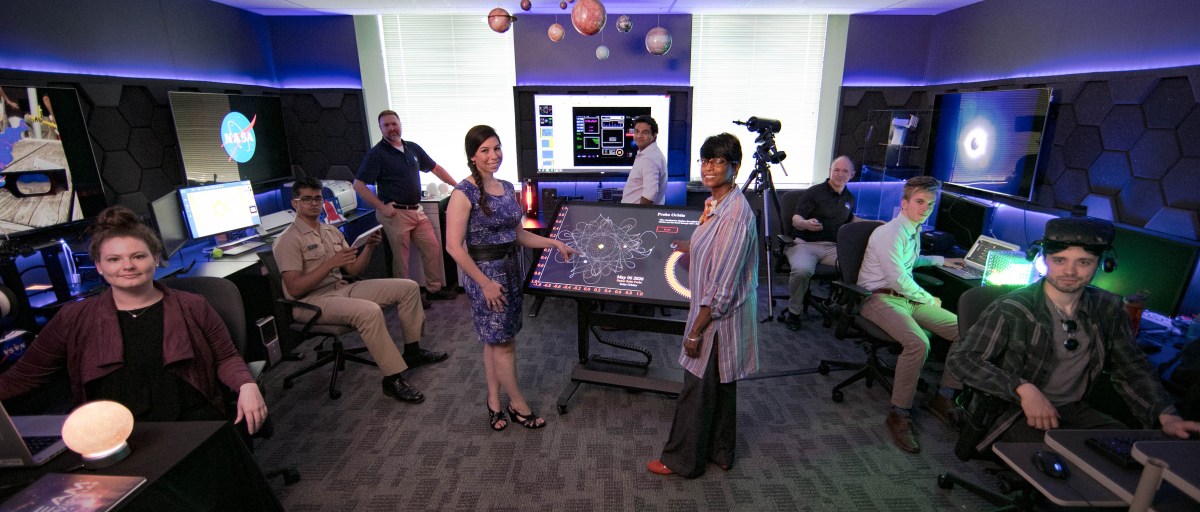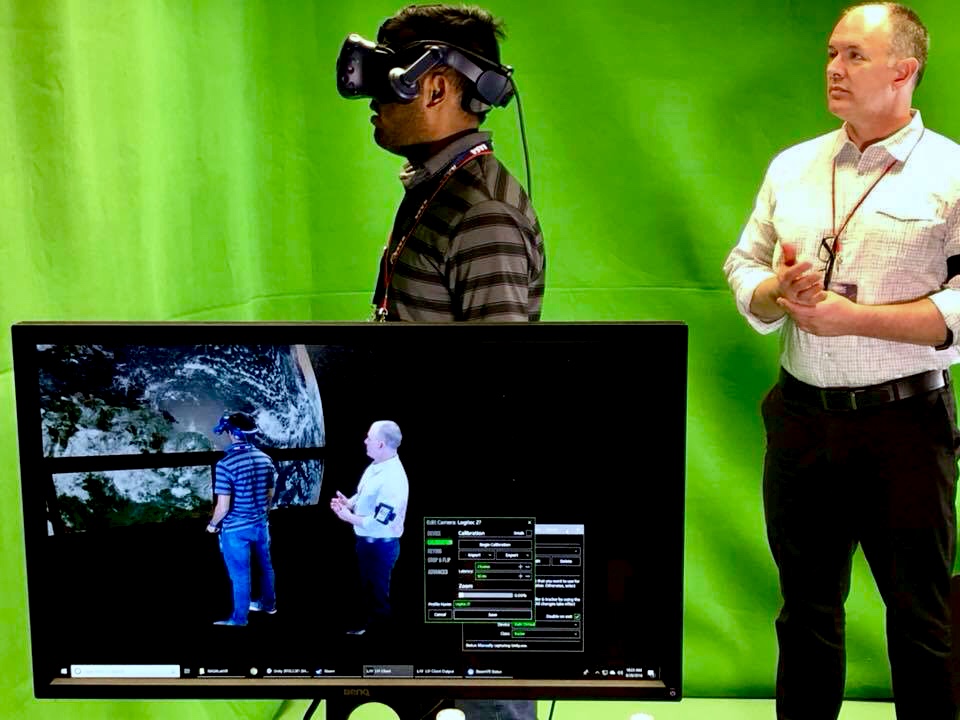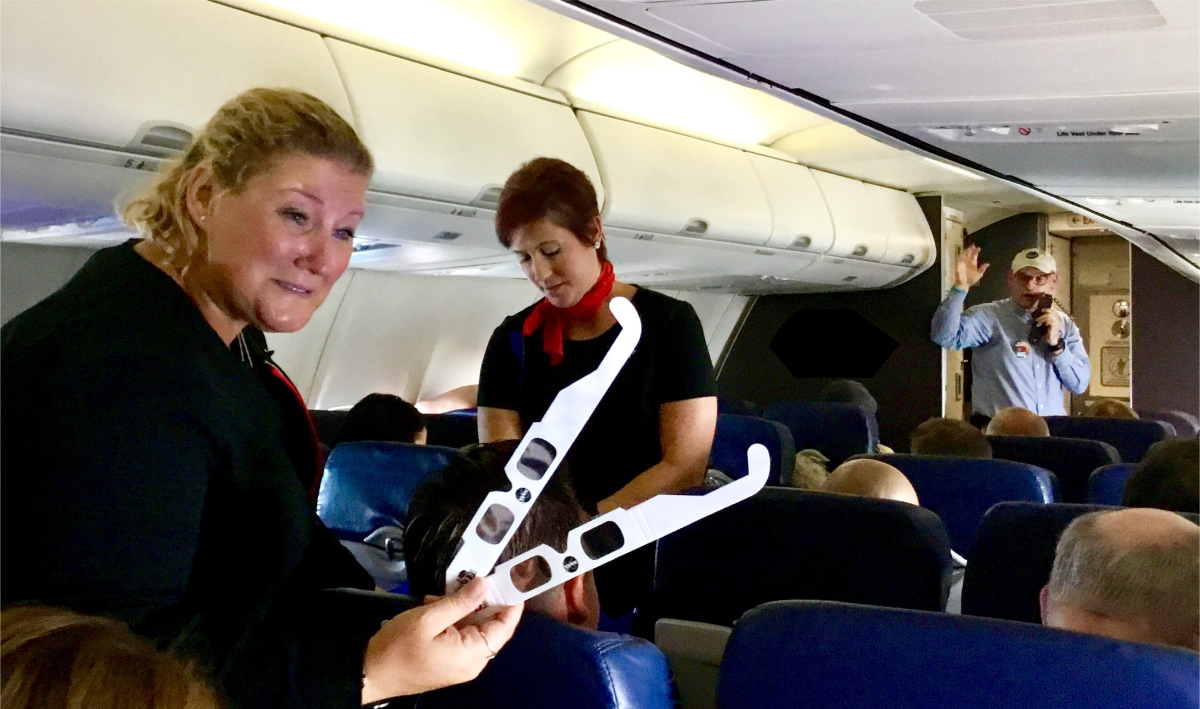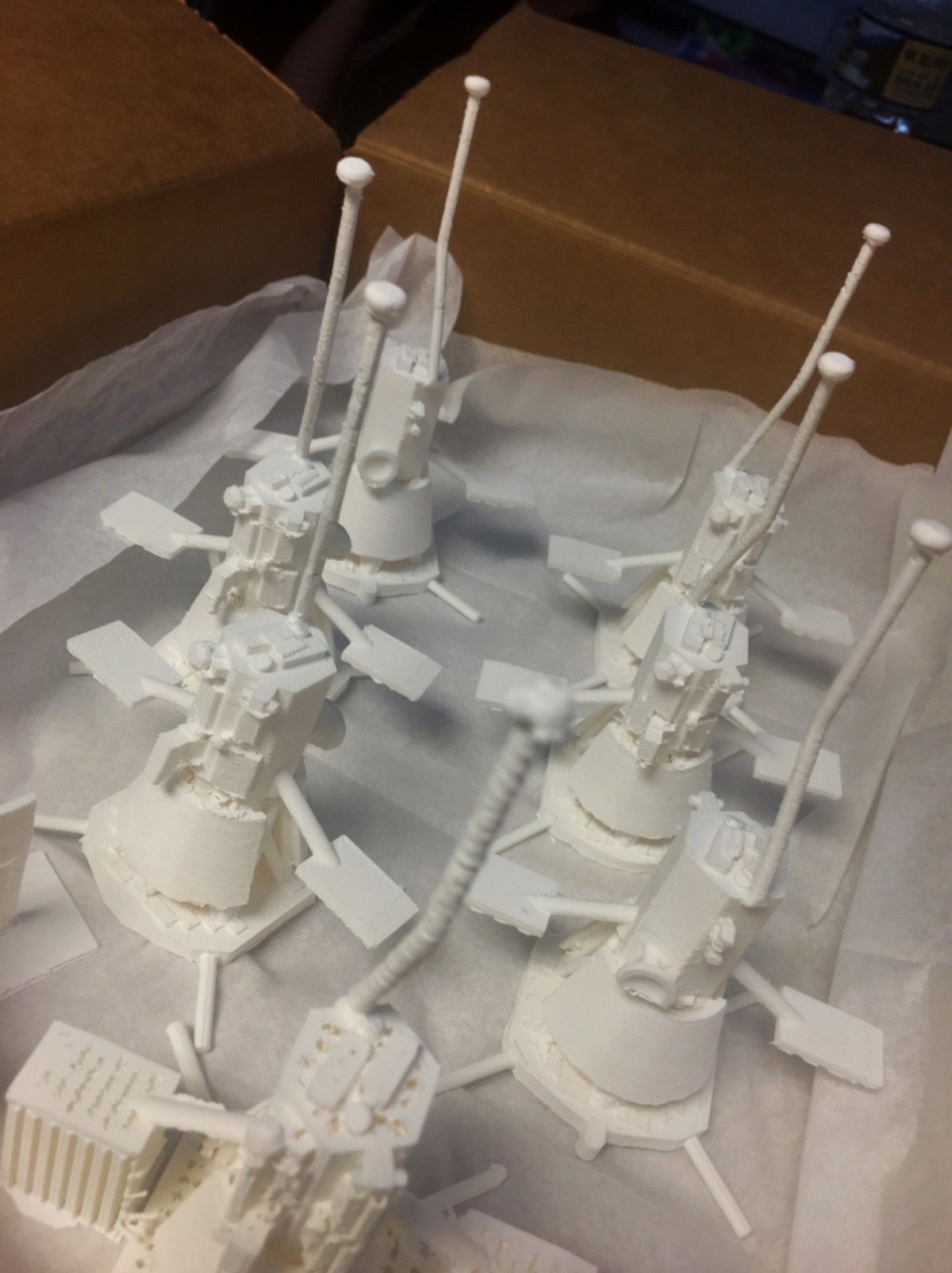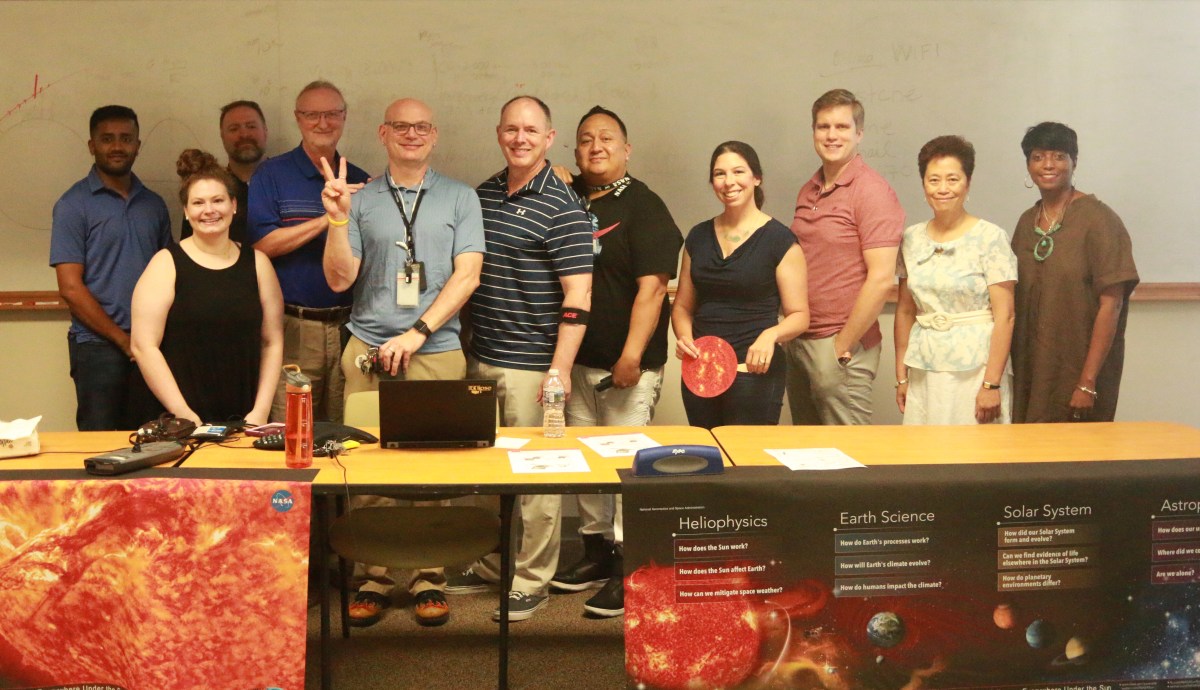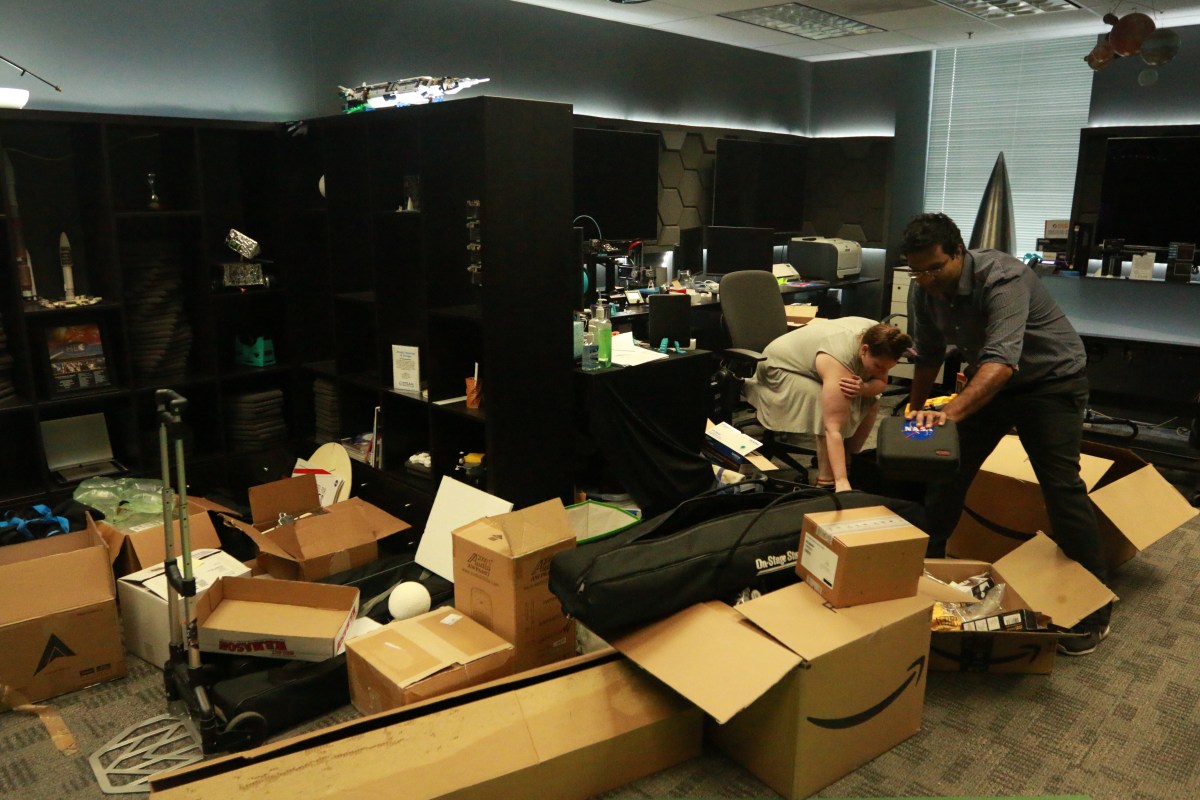The Lab Goes to ISTE20 Live!
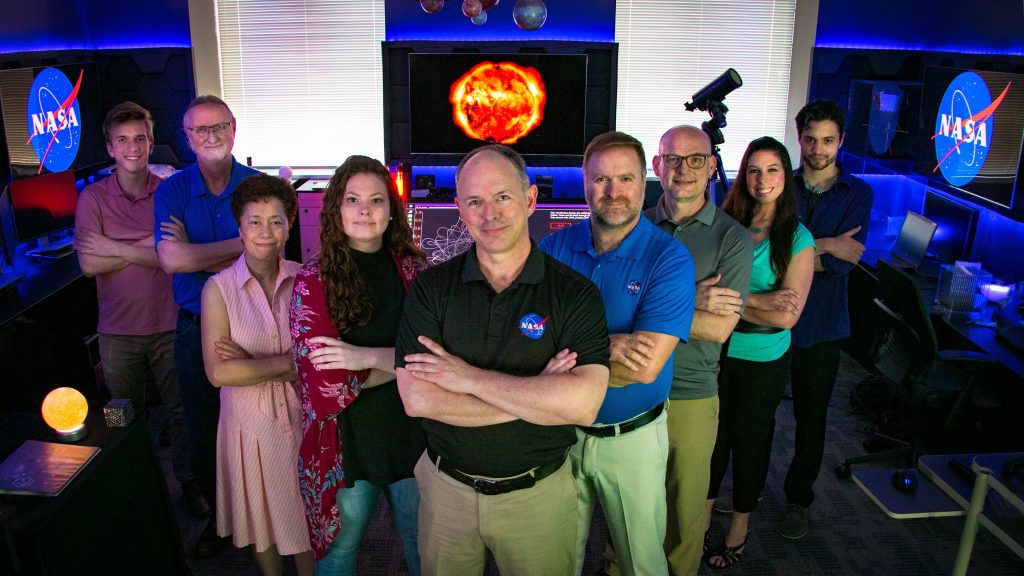
The International Society for Technology in Education (ISTE) Conference is an EdTech event that brings educators together to explore the future of technology. ISTE is virtual this year – and so is the NASA Playground. In this Playground, the NASA STEAM Innovation Lab will work with expert educators to showcase the latest projects from the lab, each of which was developed using ISTE’s educational standards. These six stations, available live on December 5, 2020, demonstrate innovative ways to bring space science activities to the classroom or virtual teaching. Each project will be presented by a NASA expert and an ISTE educator and will feature a replicable lesson or learning activity that educators can use right away.
Maggie Goes to Mars
With this gamified AR/VR challenge, student help get a canine, Maggie, to Mars. Dr. Rhonda Christensen, a presenter at the station from the University of North Texas, says, “We hope this challenge will allow teachers a way to teach space science concepts in an engaging way to their students who may be at a distance. We will show educators how they might engage their students in space science using innovative technologies like augmented and virtual reality – and it can be done by students at home!”
Feeling Hot, Hot, Hot: Up Close with the Sun
In this exciting augmented reality presentation, educators will observe the Sun through Parker Solar Probe and use Merge Cube to learn more about how NASA is studying the Sun’s corona. “This station is important because augmented reality is a great tool to help students’ problem solving and complex thinking skills,” Lani Sasser, NASA STEAM Innovation Lab Technology Specialist and presenter says. “This leads to a better contextual understanding of the topic, in addition to a physical learning educational component.
Family Science Night – Virtual Edition
NASA’s Family Science Night curriculum can be delivered virtually so families can engage with space science. Christina Milotte, a presenter at the NASA Playground and creator of the curriculum, will be presenting about the activity ‘Lunar-Surface-In-a-Box!’ She says, “This activity, designed to get families to think about how terrain affects lunar exploration, is just one of the activities we will be showcasing from the NASA Family Science Night @Home curriculum.” With this presentation, the team aims to give educators tools and tricks for facilitating family learning at home through a virtual platform.
A Night Under the Stars
Contribute to NASA citizen science by learning how to take pictures with of the night sky with your smartphone and learn about the effects of light pollution on astronomy. “Smartphone cameras can be used to capture images of many kinds of astronomical objects, both with a simple tripod and with a telescope. You can even photograph the Northern Lights, sundogs and satellites streaking across the sky,” Dr. Sten Odenwald, STEAM Lab member and presenter of this station says. “This Playground will show you how to do it, and have lots of fun taking spectacular photos too!” Dr. Odenwald even has a new book out about Smartphone Astrophotography, that you can explore at home.
Robots Have Sensors, Too!
With this presentation on robotic small sensors, educators can learn more about how NASA uses robots in Earth and space explorations and how small sensors are used as important instruments on robotic missions. “Robotics provides numerous technologies that support STEM education,” Leslie Garrison, presenter of this station, says. “In addition to being fun, robots engage beginners and advanced students and incorporate many of the fundamental STEM concepts providing a learning platform that students enjoy. By teaching robotics, educators can prepare today’s students for tomorrows workplace.”
Space Storm Warning!
Wi-Fi-enabled coding can help your students see when space weather hits Earth’s magnetosphere. Presenter Kaushal Patel hopes educators will learn how to “visualize NASA Science and data streams with WiFi enabled lightings using microcomputer” and bring that knowledge to their students.
After the conference is over, all of the presentations will be available for free. We’ll add the link to the bottom of this post once those are up. You can also subscribe to our Twitter, @NASASpaceScienceEdu, so you can get notified as soon as they’re up.
New Profile: Small-Scale Robotic Sensors
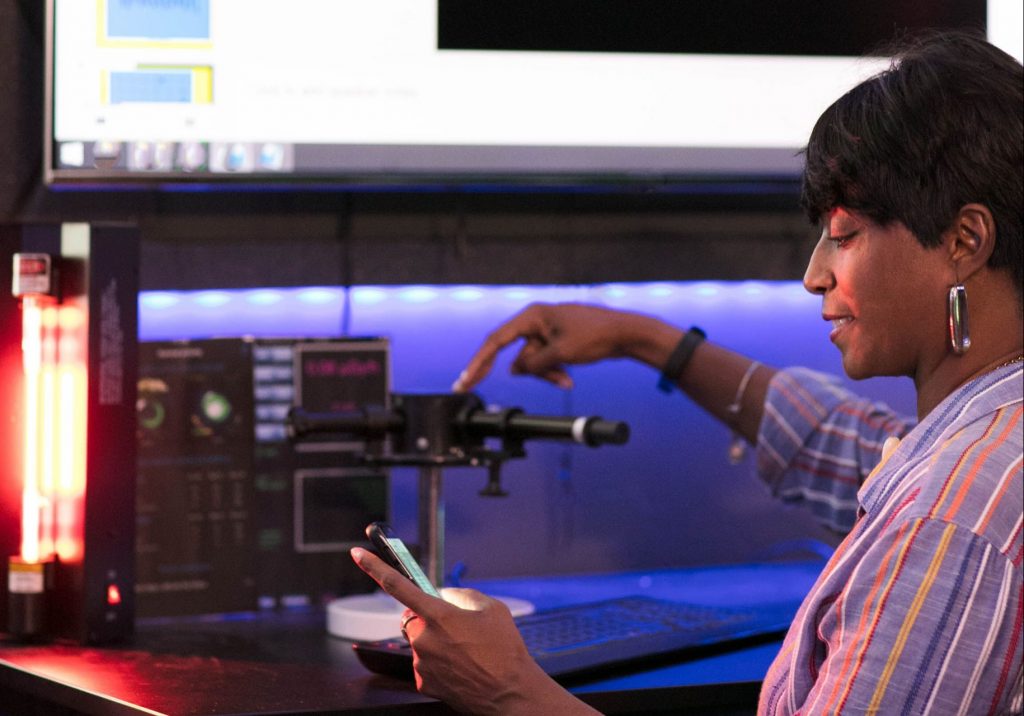
In the NASA STEAM Innovation Lab, scientists, engineers, and educators are exploring how to use robotics in education. Robotics are extremely common in the work that NASA does, because robots can do things that humans cannot. This includes exploring faraway places or conducting dangerous work. From robotic arms to rovers, robots are only becoming more vital to NASA’s missions. This new Exploration Idea Profile shows how LEGO and VEX robots can mimic NASA robotics.
With the integration of affordable sensors to explore temperature, navigation, and the positions of small objects, these small-scale robotic sensors can mirror similar sensors used in NASA missions, such as thermocouples, resistance temperature detectors (RTD), and global positioning system (GPS) used in NASA’s MMS spacecraft.
“There are thousands of robots that make space exploration possible. As robots continue to evolve, they are at the forefront of space exploration,” Leslie Garrison, NASA MMS Mission Sr. Outreach Coordinator and Team Lead of this Exploration Idea Profile, says. “Many scientists believe robots, not humans, will make the next great discoveries in space. I believe if we can get students inspired, engaged, and educated we can eventually employ them. A great start would be the NASA internship opportunities and research programs for both high school and college students.”
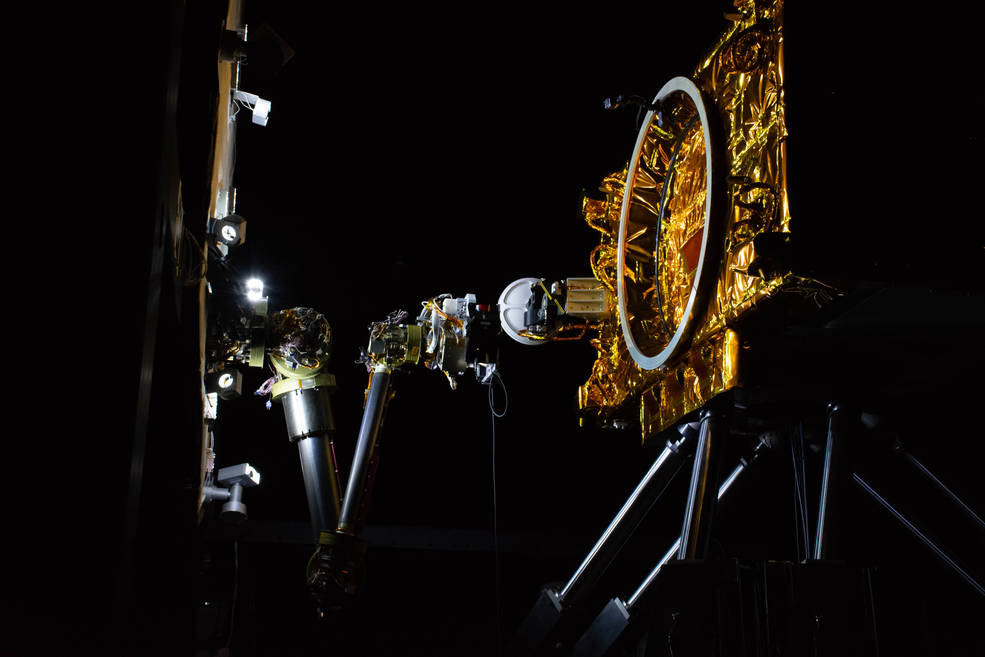
The people who work in the NASA STEAM Innovation Lab want to make sure that the technology they’re exploring is not only connected to technology in NASA missions, but also connected to the education students receive in our school systems.
“Robotics education is becoming increasingly commonplace in schools. This is largely due to the fact that students will graduate into a workforce with plentiful technology, in an era where robots will become widely used in our everyday lives,” Leslie explains. “It’s clear that the United States needs more highly-skilled STEAM workers to remain globally competitive. And STEAM education – including trained STEAM teachers – is critical to that goal. Learning robotics teaches students many important skills, such as analytical thinking, programming, teamwork, collaborative thinking, innovation, and more.”
Robotics provides numerous technologies that support STEAM education. In addition to being fun, robots engage beginners and advanced students, as well as incorporate many of fundamental STEAM concepts, providing a learning platform that students enjoy. By teaching robotics, educators can prepare today’s students for tomorrow’s workplace, however many students are learning from home right now. Since kits can be low cost and many don’t require a background in programming, kids and adults alike can begin exploring robotics.
Leslie says, “Whether students aspire to become an astronaut, engineer, computer programmer, scientist, or one of the hundreds of other STEAM career options, they need a foundation in coding and the design process. There are many robotics kits for children as young as 5 years old to learn robotics and coding with very simple challenges and projects. Parents can teach their children with numerous easy to use online lessons that include videos and step-by-step instructions for coding and engineering concepts.”
Leslie and the NASA STEAM Innovation Lab are excited to share this new profile with you. We’d love to hear your ideas for using robotics to explore educational technology. Leave your thoughts in the comments below! You can see the new profile here and see the latest Dispatch with a note and extended ideas from Leslie.
“I am excited to explore and create unique opportunities for students/youth to contribute to NASA’s work in exploration and discovery,” Leslie says. “I’d like to further provide ways to support youth/students and teachers of color in robotics education. By engaging students in authentic learning experiences with NASA people, content, and facilities we have the opportunity to build a diverse future STEAM workforce.”
To subscribe to the NASA STEAM Innovation Lab Dispatch and get the latest from the lab straight to your inbox, sign up here.
The NASA STEAM Innovation Lab Blog: What’s Coming Up?
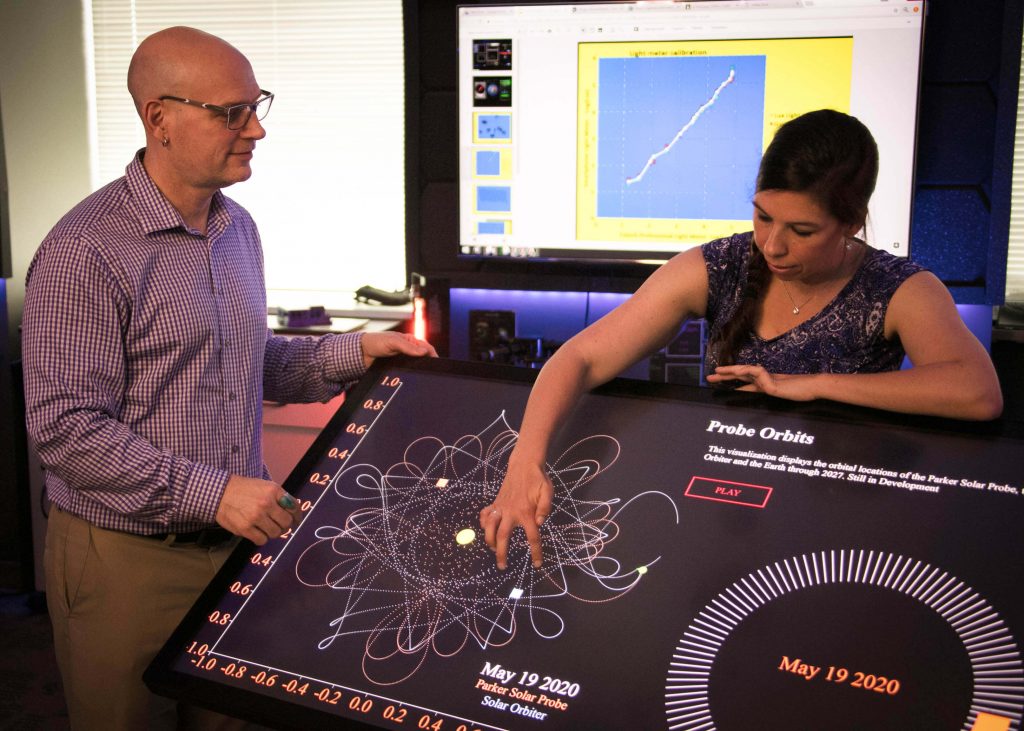
The NASA STEAM Innovation Lab has been and always will be a place for scientists, engineers, and educators to come together and explore educational technology. In the lab, our researchers are always coming up with new ideas and new ways to explore science. This research isn’t just happening behind closed doors — we want you to be involved, too!
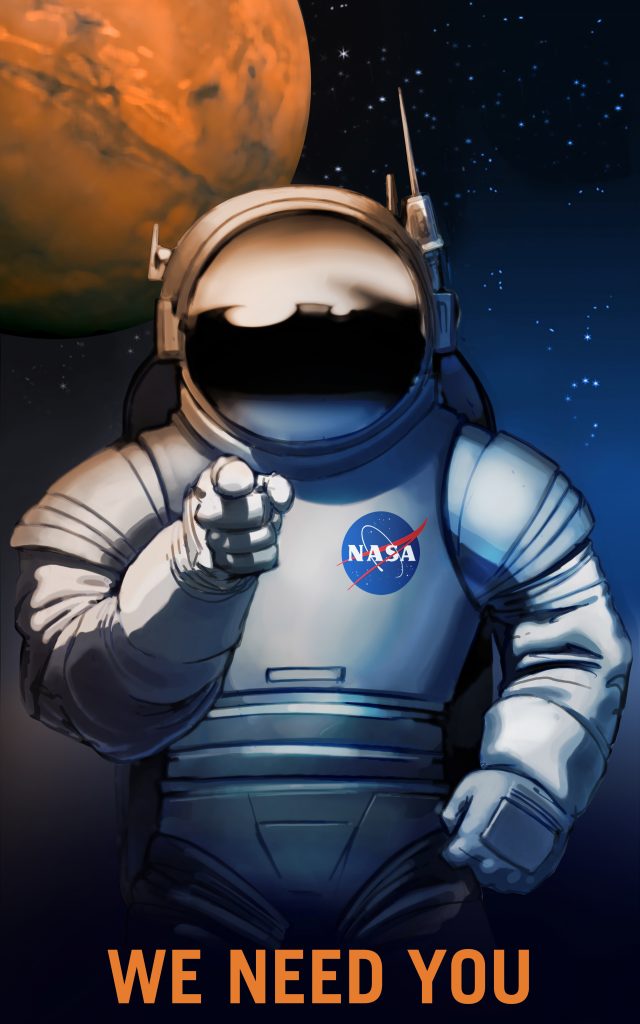
We’re going to use the blog as a place to share these new ideas with you because we want to hear what you think about them. In addition to that, as we work on these ideas and other existing projects in the lab, we will post different ways that you can explore the projects in your own space. Moving forward you’ll see the following types of posts on the blog:
- Tips and Tricks
- New Ideas
- Low Tech and At Home Activities
- Collaborations with Other Groups
- And More!
Troy Cline, Director of the NASA STEAM Innovation Lab, says “The NASA STEAM Innovation Lab provides the perfect place to foster and promote the development of a diverse community of people who share common goals of knowledge and growth. That is what truly makes NASA great. My hope is that you will use this blog and the lab’s growing list of resources as a NASA booster shot to enhance your existing learning environment, makerspace, or project.”
We can’t wait to share what we’ve been working on with you through the blog. Let us know what else you want to see from us in the comments! Want more from the lab straight to your inbox? Subscribe to the NASA STEAM Innovation Lab Dispatch!
Tips and Tricks: Exploring Augmented Reality for the Countdown to Mars!
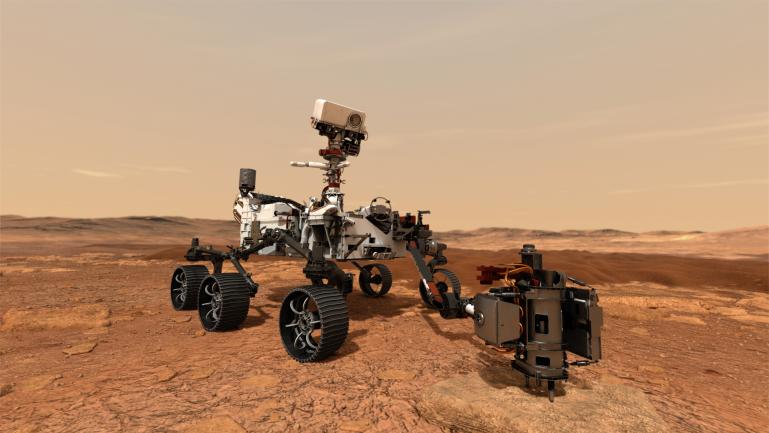
In the coming weeks, NASA will launch Mars Perseverance, a new rover that will seek signs of ancient life and collect rock and soil samples for possible return to Earth. Perseverance, slated to launch between July 30 and August 15, will arrive on the Red Planet on February 18, 2021 at the Jezero Crater. The new Mars Helicopter will also hitch a ride to perform a technology demonstration to test the first powered flight on Mars.
In the NASA STEAM Innovation Lab, researchers are always looking for new ways to explore NASA’s latest missions. For example, the Augmented Reality and Visualizing Solar Missions Exploration Idea Profile shows how members of the NASA STEAM Innovation Lab are researching different augmented reality technologies to display and learn about NASA solar missions. But, did you know that with this profile, you can develop with more than just missions that study our Sun?
With this research, you can also visualize different spacecraft missions through the creation of a virtual world, such as displaying a segment of Mars surface and introducing the Mars Perseverance rover’s path along the surface. To learn more about this process, visit the Exploration Idea Profile to get started!
Lani Sasser, NASA STEAM Innovation Lab Specialist and creator of this Exploration Idea Profile, says you can also experience AR and Mars with just your smartphone!
“Spacecraft AR, developed by Jet Propulsion Laboratory, is a free app downloadable on any device where you can explore Earth, Mars, planetary, launch, and antenna augmented reality experiences,” Lani says. “Have you ever wanted to see a to-scale model of the Curiosity rover in your home? Using this app, you can place a full-scale or smaller version of the Curiosity rover on any surface and examine the different features of the spacecraft and even see how certain instruments move.”
If you’re interested in trying the app out, follow this link that shows the different JPL apps, including Spacecraft AR: https://www.jpl.nasa.gov/apps/.
The 5 Questions Attendees Asked Us Most Often At ISTE
The NASA STEM Innovation Lab recently had the pleasure of participating in the International Society for Technology in Education annual conference in Philadelphia. The team was able to bring our virtual reality, coding and electronics, and digital fabrication and design programs. Our stations also featured digital applications, mobile sensors and citizen science, an accessible eclipse experience for the visually impaired, and even a planetarium. People who walked through the NASA Playground could attend 25 flash talks from team members ranging from makerspaces in a Navajo community to where to begin with a 3D printer.
Our interactions with the many thoughtful and engaging conference-goers who stopped by the NASA Playground were the greatest part of ISTE for many NASA team members. These are the biggest questions that participants asked us and we have answers!
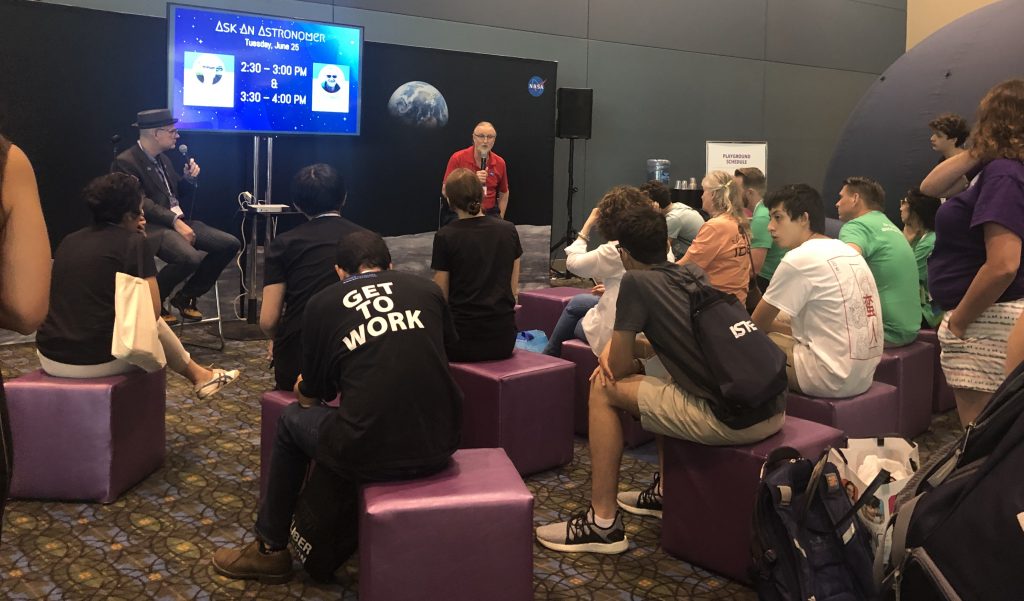
“Have you tried this?”
This is our favorite question! Everyone from NASA was inundated with thoughts and creative ideas from people who walked through our stations. Attendees shared everything from ways to integrate our projects into the classroom or types of research that they’d like to see explored with the team. We hope our programs can inspire new ideas and technologies and we want to hear them!
“How Can My Whole Classroom Participate?”
Or this question’s cousin: “Can students work together while doing this project?” We have many ideas that can involve multiple students—like our coding and electronics or papercutting projects—but we were motivated to develop even more group-centric programs. Stay tuned for those!
“How Much Does This Cost?”
We work hard to include low-end to high-end technologies in our work. That’s why we’re currently incorporating more NASA content into papercutting projects—it’s just paper! Our mobile sensors and citizen science projects, as well as the app Spacecraft AR, only require a smartphone or tablet and we’re creating more projects that are low or no cost.
“Do you have a curriculum or lesson plans?”
As a thinktank and makerspace, we generate and collect ideas that could be further developed into lesson plans and curriculum by our users. We hope that people will get inspired to build off these malleable ideas and incorporate them into their programs the ways they best see fit. However, NASA has developed a large number of lesson plans that teachers can use and bring into their classroom for more structured learning that you can access here.
“Can you work with us on our makerspace?”
Yes! This is the ultimate goal of NASA’s STEM Innovation Lab. We want to have NASA Outposts at makerspaces and STEM labs all over the country and potentially all over the world. To stay up-to-date on what’s next for this program, subscribe to our newsletter or contact us directly.
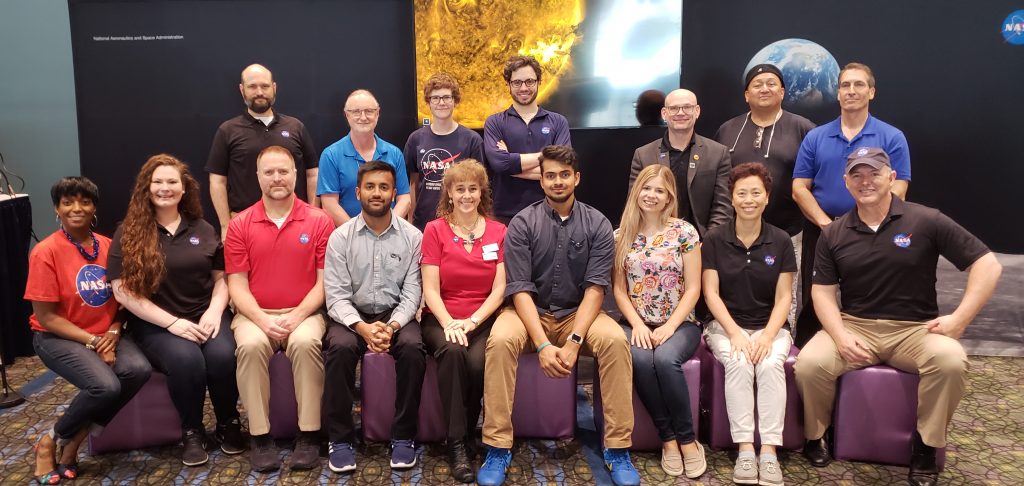
Mixed Reality: New setup for the Lab
Virtual Reality environments can be a challenge to fully perceive by watching through a TV screen. However, Mixed Reality, where a camera plus software can remove a green screen background to place a user directly into the environment for all to see is hugely more collaborative.
Prior to the STEM Innovation team traveling down to Kennedy Space Center (KSC) last week, the VR development team were lucky enough to receive and quickly test a Mixed Reality setup.
Mixed Reality, depending on what articles you read, seems to have slightly different meanings. Here we talk about Mixed Reality as a method for people to more clearly see what a VR user is seeing – by overlaying the person directly inside their VR environment and displaying it onto a TV screen.
Once we got the camera and software (we tested a product called LIV), we went about learning how to set it up for our Lab and our Space science related products. Our VR summer intern spent a few days trying, and found it challenging to setup the ‘triangulation part’ of the software. This part of the setup effectively generates a depth perception of the VR environment i.e. to estimate when a person is in front/behind a virtual object.
We did manage to get Mixed Reality working briefly, just prior to shipping our equipment to Kennedy, but we did not have the time to perform robust tests to ensure it would smoothly operate when the team went on the road. This meant the VR team were able to use the Parker launch at KSC was a great testbed for us to learn what is needed to demonstrate Mixed Reality while on tour during future conventions and conferences.
Have you tried a different system to operate Mixed reality in your Lab, or on the road? If so, let us know how you got along and what you liked about it?
Parker Solar Probe: T Minus 1 day
Today is the STEM Innovation team travel day. We are mostly arriving from various airports around the Washington DC area and at different times of the day. The flight is about 2hours and 15min. But have you ever wondered how long it would have taken Parker to travel the same distance?
Today, the majority of the STEM innovation team have been in transit to Florida. Not only have we transported the majority of the equipment and technology ahead of time, but many of us are also bringing smaller items that we are more intimately involved with – and perhaps things where last minute changes were needed.
A few days ago you saw us in a blog, as we boxed up several gear VR headsets. When you come to visit us this week (not if, because why wouldn’t you ☺), you will see some amazing projects that the team has been developing: From looking closely at a NASA spacecraft and Earth’s magnetic field called the magnetosphere using gear VR technology, through to NASA data visualized and interpreted into a 3D cube of LED lights, and even fly with Parker in VR as your buddy while it circles the Sun. And of course, not forgetting, so much awesome NASA related material for you to take home and learn about Space.
When Parker flies around the Sun, it speeds up as it gets closer to the Sun (this is the conservation of angular momentum). But did you know that Parker at its closest position to the Sun will be traveling a monstrously large speed of about 430,000 miles per hour.
Can you calculate how long it would take Parker to travel our same journey from DC to Orlando? When it took us over 2 hours to fly.
Look away now if you do not want to see the answer:
By guessing the plane follows mostly the eastern coastline, the flight is about 875 miles (using an online map).
Using the trusted formula of speed = (distance / time) , we can rearrange the formula to:
Time = (distance / speed).
Which gives us (875 / 430,000) hours.
So actually it would take Parker a mere 7 seconds !!!
Want to know more details about Parker or get hands on experience with what real scientists are investigating? Then come talk to a scientist at Kennedy this week and talk to the STEM innovation Team.
[edit: Sorry this blogs was meant to go live on Thursday night, but had delays in its release]

